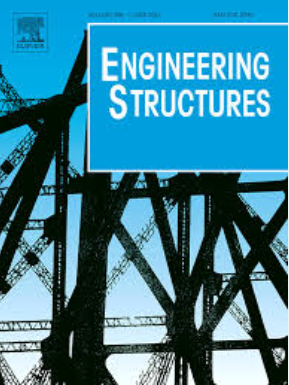Enhancing the Structural Health Monitoring (SHM) through data reconstruction: Integrating 1D convolutional neural networks (1DCNN) with bidirectional long short-term memory networks (Bi-LSTM)
IF 6.4
1区 工程技术
Q1 ENGINEERING, CIVIL
引用次数: 0
Abstract
Time series data plays an important role in structural health monitoring (SHM), but is often compromised by many factors including sensor failure, transmission errors, and adverse weather conditions. These issues render data incomplete, potentially leading to incorrect structural assessments. Although many studies have attempted to address data loss, reconstructing time series data for SHM remains challenging due to several factors: (1) Time series data may exhibit complex trends and fluctuations over time, making accurate reconstruction difficult; (2) Extensive data loss complicates understanding the underlying trends and relationships between data points; (3) The ìnluance of random or unpredictable factors often necessitates statistical models for replication. This research introduces a novel approach that combines a one-dimensional convolutional neural network (1DCNN) with a Bidirectional Long Short-Term Memory (Bi-LSTM) network to reconstruct missing sensor data in SHM. The proposed method leverages the strengths of two deep learning networks: the robust feature extraction capabilities of 1DCNN and the enhanced temporal processing power of Bi-LSTM, which analyses time series data from past and future contexts. The effectiveness of this hybrid model is validated through two distinct projects involving a continuous 3-span steel truss bridge and a cable-stayed bridge. Results demonstrate that combining 1DCNN and Bi-LSTM effectively reconstructs data and outperforms traditional models based on 1DCNN, LSTM, or Bi-LSTM alone, offering significantly improved accuracy.
通过数据重构增强结构健康监测:将一维卷积神经网络(1DCNN)与双向长短期记忆网络(Bi-LSTM)相结合
时间序列数据在结构健康监测(SHM)中发挥着重要作用,但通常会受到传感器故障、传输错误和恶劣天气条件等诸多因素的影响。这些问题导致数据不完整,可能导致不正确的结构评估。尽管许多研究试图解决数据丢失问题,但由于以下几个因素,重建SHM时间序列数据仍然具有挑战性:(1)时间序列数据可能随时间表现出复杂的趋势和波动,难以准确重建;(2)大量数据丢失使理解数据点之间的潜在趋势和关系变得复杂;(3)随机或不可预测因素的ìnluance往往需要统计模型进行复制。本研究提出了一种将一维卷积神经网络(1DCNN)与双向长短期记忆(Bi-LSTM)网络相结合的方法来重建SHM中缺失的传感器数据。该方法利用了两种深度学习网络的优势:1DCNN的强大特征提取能力和Bi-LSTM的增强时间处理能力,后者分析了过去和未来背景下的时间序列数据。通过3跨连续钢桁架桥和斜拉桥两个不同的工程验证了该混合模型的有效性。结果表明,结合1DCNN和Bi-LSTM可以有效地重建数据,并且优于单独基于1DCNN、LSTM或Bi-LSTM的传统模型,准确率显著提高。
本文章由计算机程序翻译,如有差异,请以英文原文为准。
求助全文
约1分钟内获得全文
求助全文
来源期刊

Engineering Structures
工程技术-工程:土木
CiteScore
10.20
自引率
14.50%
发文量
1385
审稿时长
67 days
期刊介绍:
Engineering Structures provides a forum for a broad blend of scientific and technical papers to reflect the evolving needs of the structural engineering and structural mechanics communities. Particularly welcome are contributions dealing with applications of structural engineering and mechanics principles in all areas of technology. The journal aspires to a broad and integrated coverage of the effects of dynamic loadings and of the modelling techniques whereby the structural response to these loadings may be computed.
The scope of Engineering Structures encompasses, but is not restricted to, the following areas: infrastructure engineering; earthquake engineering; structure-fluid-soil interaction; wind engineering; fire engineering; blast engineering; structural reliability/stability; life assessment/integrity; structural health monitoring; multi-hazard engineering; structural dynamics; optimization; expert systems; experimental modelling; performance-based design; multiscale analysis; value engineering.
Topics of interest include: tall buildings; innovative structures; environmentally responsive structures; bridges; stadiums; commercial and public buildings; transmission towers; television and telecommunication masts; foldable structures; cooling towers; plates and shells; suspension structures; protective structures; smart structures; nuclear reactors; dams; pressure vessels; pipelines; tunnels.
Engineering Structures also publishes review articles, short communications and discussions, book reviews, and a diary on international events related to any aspect of structural engineering.
 求助内容:
求助内容: 应助结果提醒方式:
应助结果提醒方式:


